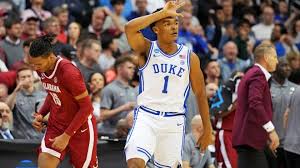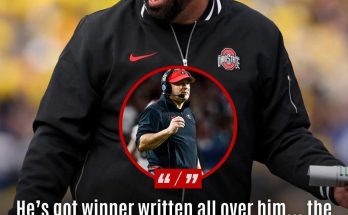As the Duke Blue Devils prepare for the 2025–26 college basketball season, head coach Jon Scheyer faces a pivotal juncture in his tenure. Following a Final Four appearance and the departure of several key players, Scheyer must navigate roster adjustments, player development, and strategic recruitment to maintain Duke’s competitive edge.
The most pressing concern for Scheyer is compensating for the loss of top-tier talent. Cooper Flagg, the Associated Press National Player of the Year, declared for the NBA Draft after a standout freshman season, leaving a significant void in scoring, defense, and leadership . Additionally, Kon Knueppel and Khaman Maluach are also expected to pursue professional careers, further depleting the roster .(AP News, CBSSports.com)
These departures necessitate a recalibration of the team’s dynamics, as the Blue Devils must identify new leaders and primary contributors to uphold their high standards.
In an era where the transfer portal significantly influences team compositions, Scheyer’s approach has been notably conservative. While programs like Kentucky and St. John’s have aggressively utilized the portal to bolster their rosters, Duke has focused on internal development and selective additions .(The Chronicle)
The acquisition of Jack Scott from Princeton, a player known more for his toughness than statistical output, exemplifies this strategy . However, this measured approach raises questions about whether Duke is doing enough to remain competitive, especially when considering the caliber of talent available through transfers.(Duke Basketball Report)
With a significant portion of the roster comprising underclassmen, Scheyer faces the challenge of integrating young talent into pivotal roles. Incoming freshmen, including Cameron and Cayden Boozer and Nik Khamenia, bring promise but lack collegiate experience .(Duke Basketball Report)
The development and maturation of these players will be crucial. Their ability to adapt to the collegiate game’s physicality and pace will determine Duke’s success in the upcoming season.
The departure of seasoned players like Jeremy Roach and Kyle Filipowski leaves a leadership vacuum. While returning players such as Caleb Foster and Isaiah Evans have shown potential, they must now step into more prominent roles, both on and off the court .(SI, Duke Basketball Report)
Foster, for instance, averaged 5.1 points over 37 games, indicating room for growth . Evans’ decision to withdraw from the NBA Draft suggests a commitment to further development . Their progression into leadership positions will be instrumental in guiding the team’s younger members.(CBSSports.com, Duke Basketball Report, Duke Wire)
The frontcourt presents another area of concern. With the departures of Maluach and other key forwards, Duke’s interior presence is diminished . The return of Maliq Brown, known for his defensive prowess, offers some stability .(The Chronicle, Wikipedia)
However, Brown’s injury history, including a dislocated shoulder that sidelined him during critical games, raises durability questions . The development of players like Khamenia, who brings versatility and size, will be vital in reinforcing the frontcourt.(Wikipedia, Duke Basketball Report)
The offseason also saw changes in the coaching staff, with assistant coach Jai Lucas departing for Miami . Lucas played a significant role in player development and recruitment. His absence necessitates adjustments within the coaching hierarchy and could impact the team’s strategic planning and player mentorship.(CBSSports.com)
Analysts have expressed skepticism regarding Duke’s roster strength post-Flagg. Jeff Goodman, for instance, remarked that the current lineup doesn’t instill the same fear in opponents as previous iterations .(Sportskeeda)
Such perceptions can influence team morale and external expectations. Scheyer must manage these narratives, ensuring that the team remains focused and motivated despite external doubts.
Jon Scheyer’s fourth season at the helm of Duke basketball presents a complex landscape of challenges and opportunities. The departure of key players, a youthful roster, and strategic decisions regarding recruitment and development will test his leadership and adaptability.
Success will hinge on the effective integration of new talent, the emergence of internal leaders, and the ability to navigate the evolving dynamics of college basketball. As the Blue Devils embark on the 2025–26 season, Scheyer’s vision and strategy will be under the spotlight, determining whether Duke can maintain its storied legacy in the sport.



